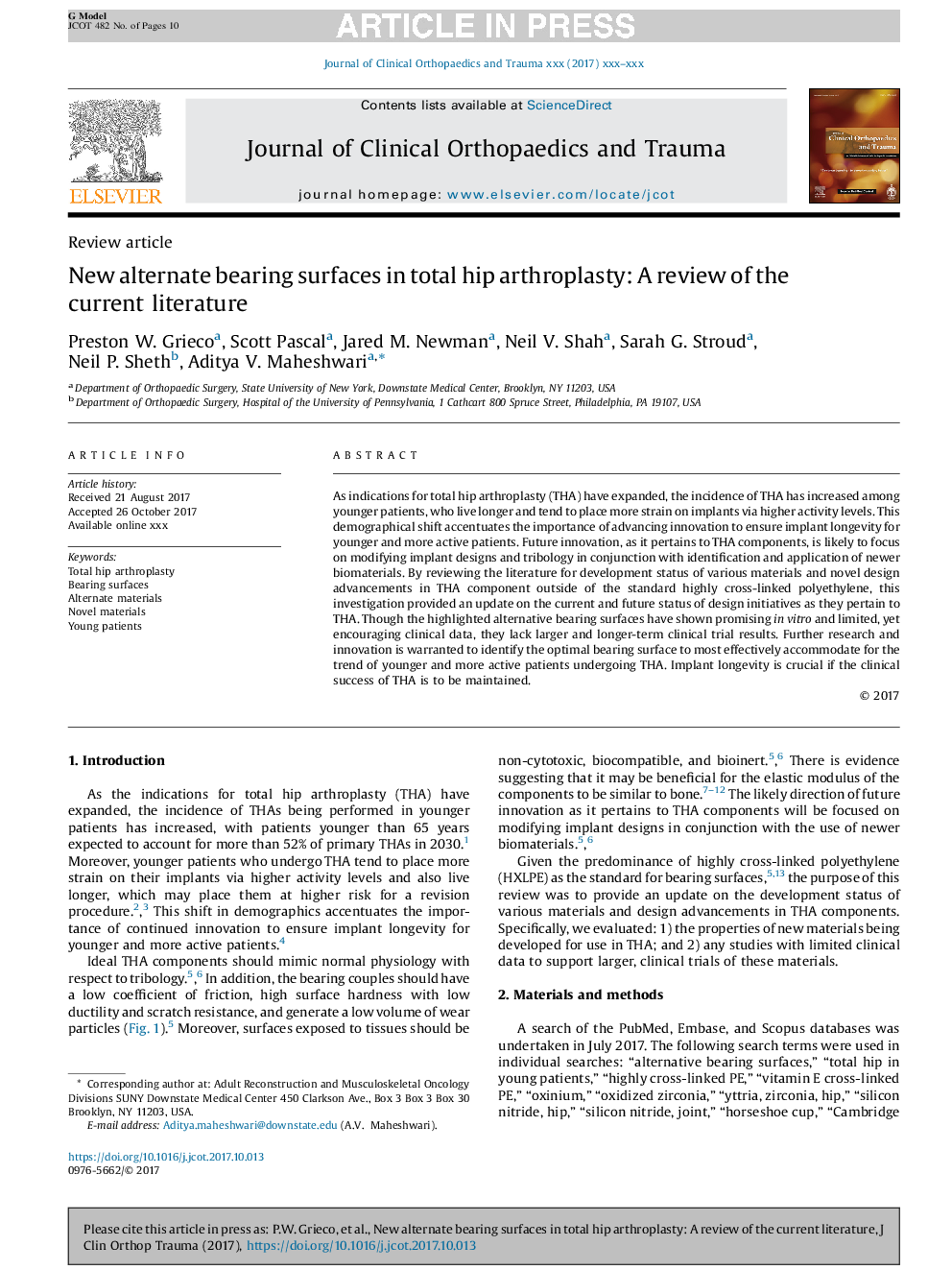| Article ID | Journal | Published Year | Pages | File Type |
|---|---|---|---|---|
| 8719192 | Journal of Clinical Orthopaedics and Trauma | 2018 | 10 Pages |
Abstract
As indications for total hip arthroplasty (THA) have expanded, the incidence of THA has increased among younger patients, who live longer and tend to place more strain on implants via higher activity levels. This demographical shift accentuates the importance of advancing innovation to ensure implant longevity for younger and more active patients. Future innovation, as it pertains to THA components, is likely to focus on modifying implant designs and tribology in conjunction with identification and application of newer biomaterials. By reviewing the literature for development status of various materials and novel design advancements in THA component outside of the standard highly cross-linked polyethylene, this investigation provided an update on the current and future status of design initiatives as they pertain to THA. Though the highlighted alternative bearing surfaces have shown promising in vitro and limited, yet encouraging clinical data, they lack larger and longer-term clinical trial results. Further research and innovation is warranted to identify the optimal bearing surface to most effectively accommodate for the trend of younger and more active patients undergoing THA. Implant longevity is crucial if the clinical success of THA is to be maintained.
Related Topics
Health Sciences
Medicine and Dentistry
Emergency Medicine
Authors
Preston W. Grieco, Scott Pascal, Jared M. Newman, Neil V. Shah, Sarah G. Stroud, Neil P. Sheth, Aditya V. Maheshwari,
